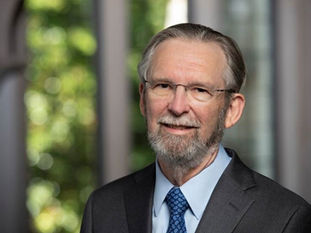Exploring Medical Ethics in Healthcare

The final portion of the book is the aftermath of the evacuation, which was titled “the Reckoning” by Sheri Fink. The cleanups started, news articles written, and interviews were performed. Katrina was devastating to everyone in the New Orleans area, but Memorial turned out to be hit pretty hard. More patients had died at Memorial than anywhere else in the city. Soon, news outlets were tipped off that there was strong evidence of euthanasia within sets of certain patients. Police began to investigate the 45 bodies that were found at the end of the crisis. Soon, there was a deeper dive into the events that happened during those five days. Different persecutors began to question the nurses and other medical staff at Memorial. Special Agent Virginia Rider interviewed a few different witnesses, one of them being the physical medicine director Kristy Johnson. She began to recount her experiences, and talked about how all of the LifeCare staff ran themselves into the ground trying to keep their patients alive. She recalled hearing Susan Mulderick saying at a meeting that she didn’t believe that any of the LifeCare patients would survive the disaster. She remembered

the chaos of the day, and being told that all of her patients would be given a lethal dose. She admitted that she didn’t remember every single detail, but that was the gist of the experience. More and more people were interviewed, and while there were some discrepancies, most people reported the same general story. Some hadn’t exactly recalled the words lethal dose being said from Dr. Pou and Mulderick, but the consensus was there that they had sedated patients with a certain cocktail.
At this point, Memorial hospital was completely under investigation. Rider went with several other agents, along with infectious disease experts from the CDC to ensure the hospital was safe to enter. After they confirmed there wouldn’t be any issues, they entered the hospital and began to explore the different floors. Pharmacy records were seized, where they found the order Dr. Pou had put in for extremely large amounts of morphine. As Rider explored the hospital, she thought “what struck her most was the smell of death. It was everywhere in the hospital; if you smelled it, you could never forget it.” (Fink, 254). Fider was surprised to find an abundance of food and bottled water, generators that were not completely submerged, and what seemed like much easier routes to the helipad than had been reported in any of the interviews. They also found morphine ampoules (read more about those here: https://en.wikipedia.org/wiki/Ampoule), littered around the nursing stations, which is not where a controlled substance is supposed to be. This, along with other pieces of evidence, was turned over to the state to analyze. Along with it, a police report had written “suspect may have euthanized multiple patients in Memorial Medical Center (MMC) following Hurricane Katrina.” Some of the LifeCare family members had evacuated just one day prior to the euthanasia, and multiple of them had reported that their loved ones were not anxious or in pain. They did not believe that their family members needed to die.

Autopsies were performed on the deceased, many of them reporting high traces of the lethal cocktail. It seemed very clear to the persecutors exactly what had happened at Memorial. While more and more of the United States began to follow what had happened, Dr. Pou could not hide from her face on the news and reporters swarming her at all times. At one point, she had to stop performing surgery (she had taken a position at LSU after Memorial announced it would close for at least six months and laid off all of their employees). She couldn’t imagine the backlash she would face if she lost any patients in surgery after the incident. After that, things only got worse for Dr. Pou. She, along with two nurses who aided her, got arrested with charges of second degree murder. (A news article from NPR written the day after the arrest https://www.npr.org/2006/07/18/5566057/new-orleans-doctor-nurses-charged-with-murder). This prompted national outrage, and by the time Dr. Pou got out of jail, she had spoken on many different outlets about what had happened. She even ran a fundraising event that raised almost 100,000 dollars for disaster preparedness. Her and her lawyer had decided that they were using the term reverse triaging for her charges. The case dragged on over two years after Hurricane Katrina. New Orleaneans rallied behind her with phrases like “they stayed” and “the storm was almost two years ago, but we are not done.” Ultimately, the grand jury had not decided to indict her on any of the charges. The remainder of the book was spent finding out the thoughts behind some of the families and other medical professionals in the case that did not agree with Dr. Pou. Many thought she had completely ruined society's trust in the medical profession. Others wholeheartedly agreed that she had committed homicide. Some of them just wanted her medical license revoked. Ultimately, this is a very intense ethical dilemma. Were the killings necessary? Even if they were necessary, was it Dr. Pou’s right to do it? How should the United States learn from this for future disasters? There are a lot of questions to still dive into, even with the book over.




